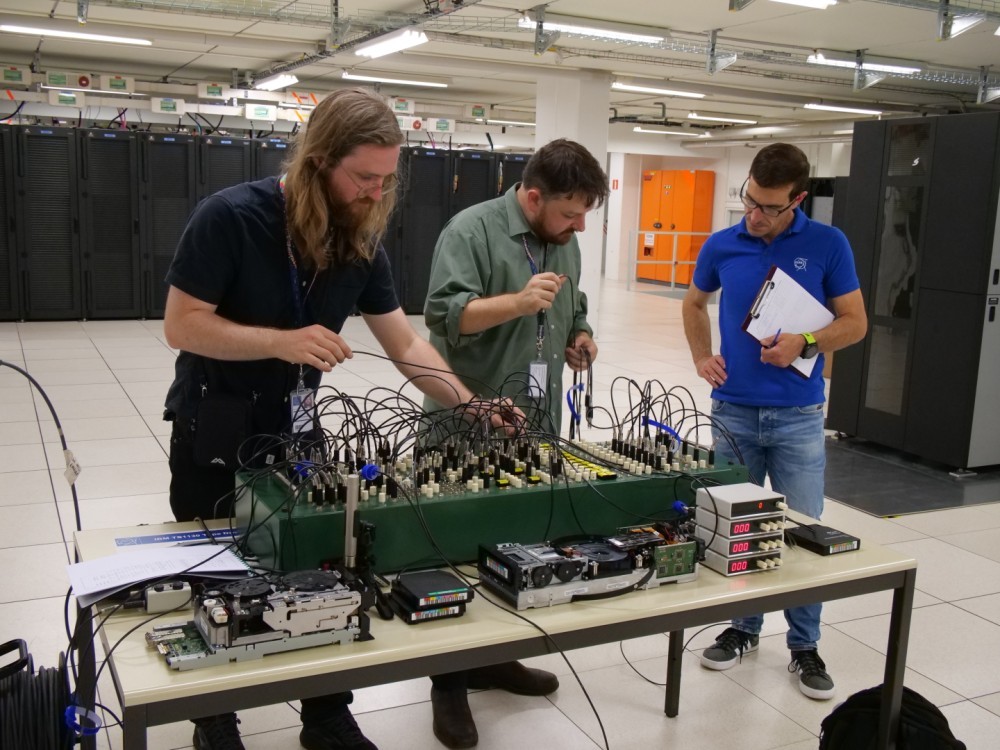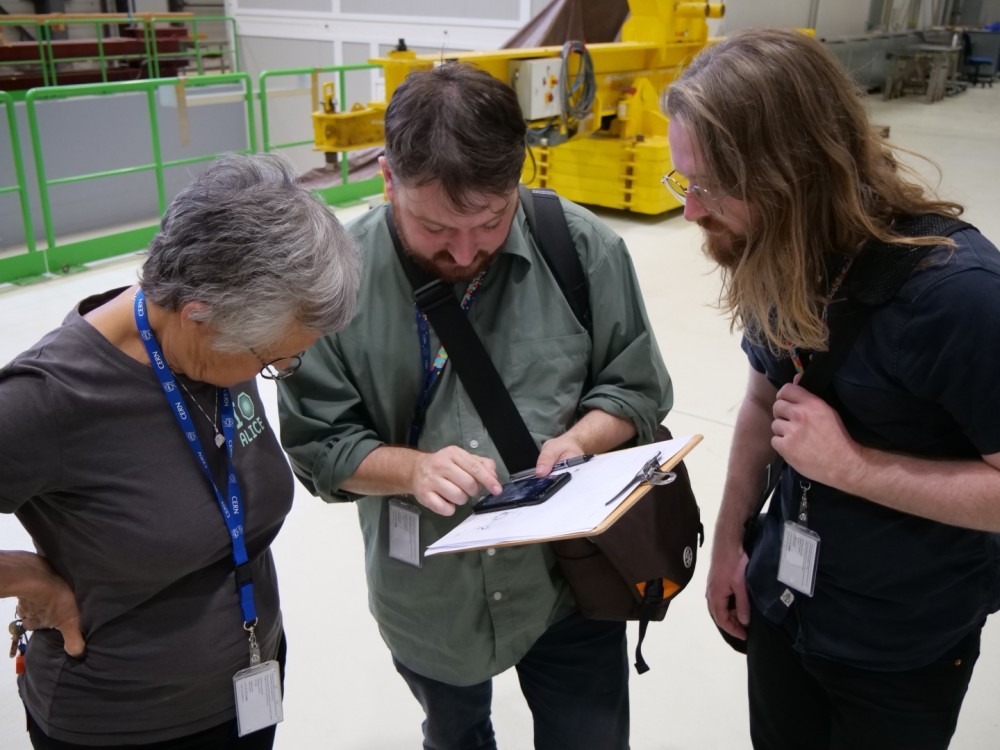
The Observatory Project, experimenting with 'non-measurements' at CERN
As the winners of an Honorary Mention of the 2021 Collide Award, the New Zealand-based artists did a short residency to engage with CERN’s research and community
The Observatory Project, the collaborative research-led project founded by Eamon Edmundson-Wells and Ziggy Lever in 2017, explores the act of making in relation to scientific processes. They use sound, video, custom-made electronics, and sculptural installation as a means to diagram, interpret, and imagine scientific methods of observation. Central to their project is the renegotiation of the notions of the gallery and the observatory, both traditional sites of experimentation in which communities produce and test knowledge. They develop ‘expanded observatories’, optical, conversational, temporary, web-based, and radio projects to freely explore systems and processes of observation and foster meaningful engagement between artists, scientists, and the public.
In 2021, they received an Honorary Mention as part of the Collide Residency Award to participate in the Guest Artists programme. During their short stay at CERN, they will expand their artistic research into their concept of ‘not-measuring’. As the artists describe, ‘Not-measuring is different from simply not taking measurements. To make a not-measurement, the action of measuring is performed with the intention of not producing data. Any traces of this not-measuring event act as documentation, reframing the event as a work of art. Not-measuring events interrupt the normal processes of measuring and observing by focusing on the act of measuring as making’.
In these processes, scientists take on an active role in the production of artworks in a dialogue that challenges the roles of artists and scientists. For their stay, the artists brought their custom-built Adaptable Sound Interferometry Equipment (ASINE), which consists of a measuring tape, callipers, a decibel meter, a calculator, and a clipboard. With this ‘entangled sensor device’, they conducted several ‘non-measuring’ experiments following the journey of lead ions through CERN’s accelerator complex. They started at the Low Energy Ion Ring (LEIR) with physicist Django Manglunk, where the particles are transformed into the dense bunches suitable for injection into the Large Hadron Collider and achieve their highest energy.
Guided by physicist Despina Hatzifotiadou, they continued at the ALICE Experiment, one of the LHC’s detectors, which records the collisions between lead ions at 100,000 times hotter than the centre of the Sun. Under these conditions, protons and neutrons’ melt’, freeing the quarks from their bonds with the gluons, and forming quark-gluon plasma, observing how it progressively gives rise to the particles that constitute the matter of our universe today.
The Observatory for the Measuring Or Not Measuring Of Sites of Observation (OMONMOSO), as the artists describe themselves, completed their experiments at the Antimatter Factory, the Data Centre, the CLOUD Experiment, and the CMS Detector with scientists Gunn Khatri, Xavier Espinal, Eva Sommer, and Andrés Delannoy.
Exploring how these processes of measurement and observation can be transposed into ways of making, their sound, video, and field recordings and research will later form the basis for an installation of sound works to be interfaced with the complete Adaptable Sound Interferometry Equipment (ASINE), a series of modular sound-generating sculptures that span across perspex-housed devices and large steel cabinets.
Collide is Arts at CERN's flagship residency programme in collaboration with a city. Between 2019-2021, Collide was organised in partnership with the Barcelona City Council and the Institute of Culture of Barcelona.


